China is looking to solve its immense waste crisis. According to the World Bank, the country is dealing with 200 million tonnes of garbage a year. Landfills are crammed and create a burden for surrounding communities. To deal with the problem, China is building more waste-to-energy plants than the rest of the world combined. But is burning waste the right approach?
Guests
- Jennifer Turner, Woodrow Wilson Center
- Doug Woodring, Ocean Recovery Alliance
- Nickolas J Themelis, Waste-to-Energy Research and Technology Council
- Christine Loh, HKUST and Civic Exchange
- Mao Da, Rock Environment and Energy Institute
More from this series
The 'Eight Million' podcast launches
Podcast: Cleaning up China’s rivers
Podcast: Sorting out China’s plastic waste
Transcript
Welcome to Eight Million – a podcast series that looks at the eight million metric tonnes of plastic entering our oceans every year – and the role China is playing to address this global challenge. Eight Million is produced by Sustainable Asia and its partners China Dialogue and Aya Recording Studio.
[music]
Marcy: Previously on Eight Million
Mao Da: 这种新消费模式使得我…
Voiceover: New consumption patterns like online shopping and food delivery are increasing our demand for plastic.
Mao Da: 是遭遇了空前的危机…
Voiceover: For the moment, we are dealing with an unprecedented crisis.
[music]
Marcy: China is trying to find the solution to solving an immense waste crisis. According to World Bank numbers, the country is currently dealing with 200 million tonnes of garbage a year.
Jennifer: The numbers are hard to get your brain around. […] To give you a nice visual […] you could fill 25 pyramids of Giza with 200 million tonnes of garbage.
Marcy: That’s Jennifer Turner, director of the China Environment Forum at the Woodrow Wilson Center.
Jennifer: And it’s going to get up to about 500 million tonnes in about five years.
Per year. That’s a lot of Giza temples of garbage. And so cities, their landfills are too full, and they need to find a solution. Now it’s intriguing to me, but not surprising at the same time, that China has gone to incineration.
[music]
Marcy: In our last episode we discussed the trouble with recycling. China’s waste import ban has put the world’s waste industry into crisis mode. And like Hong Kong environmental entrepreneur Doug Woodring told me…
Doug: If we really want to solve the problem of waste getting into our waters…
Marcy: We’ll have to look into waste-to-energy.
Doug: 90% of the world’s plastic does not get recycled even though you see a nice recycling triangle on the bottom of every product. That means it is recyclable but it doesn’t get recycled. Most of the world does not have the infrastructure to do that recycling.
Marcy: And what happens with waste that does not get recycled? The Ellen MacArthur Foundation estimates 40% goes into landfills, and a full third ends up leaking into nature. What else can we do with it? I put that question to Nickolas Themelis, a global authority on waste-to-energy technology. I rang him up in his home close to Columbia University, where he teaches. First of all, what is waste-to-energy?
Themelis: Well, after you do all possible recycling and composting on municipal solid waste, you end up with what is called post-recycling waste. With this material, which is at least 50% or more of municipal solid waste, there are two alternatives: you either landfill them, which is the usual way of dealing with them, or you use them as a fuel in a waste-to-energy power plant. It’s a power plant, same as you have for coal and gas, but it uses municipal solid waste instead of coal. […] It is a power plant that makes electricity or heat.
Marcy: So post-recycling waste, can either go to landfill or into a power plant. And China is betting hard on that latter option. Because…
Themelis: To understand we have to look at Beijing, and Beijing has had some 500 landfills around it and inside it. Because what happens with landfills: municipalities and communities build around the landfill…
Marcy: And then the landfill fills up, has to close, and they have to dig a new hole somewhere. Now China sees these pyramid sized waste heaps on the horizon, and decides they’ll need something more efficient than landfills to deal with it all. Enter the Renewable Energy Law, originally drafted in 2005, but since amended.
Jennifer: And each time it has been amended it has had ever greater targets of promoting renewable energy.
Marcy: Jennifer Turner again…
Jennifer: It used to be 10% total electricity from renewable energy by 2010, and when they amended it, it was 15%, and some provinces wanted even more, and so what this law did was it created feed in tariffs and other kinds of incentives for renewable energy.
What is really important in China is that laws are not the only thing that matters, they also had targets in their five-year-plans; so China was suddenly on fire with renewable energy investments.
But also of interest to us […] is what impact this had on waste-to-energy. Without the Renewable Energy Law […] we would not have seen this big boom of waste-to-energy plants in China. Today, there is somewhere between 230-300 waste-to-energy incinerators, and there are targets to build 300 more. The largest waste-to-energy plant in the world is under construction in Shenzhen.
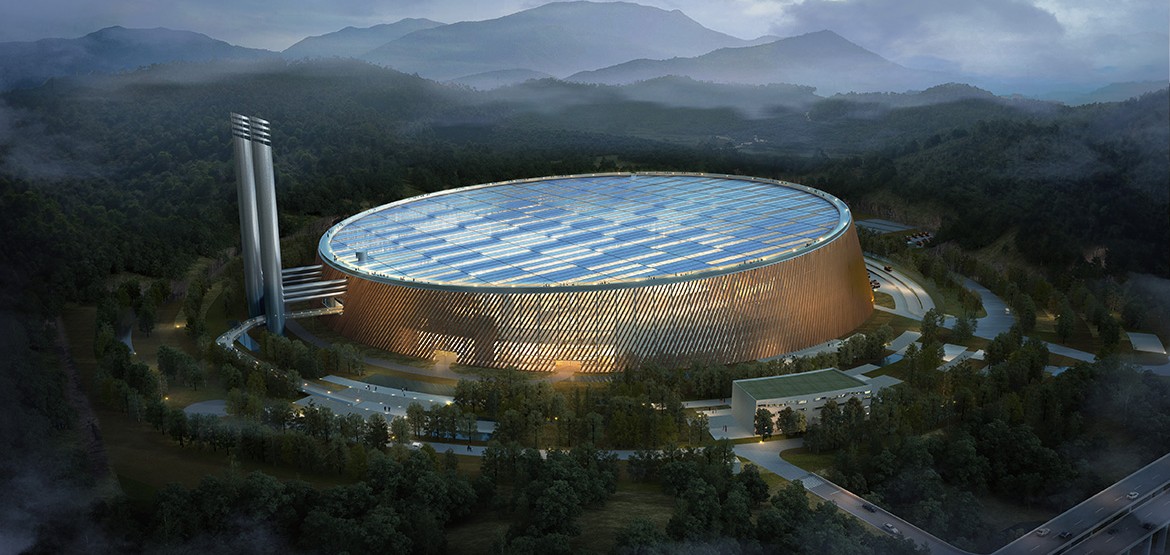
Marcy: Safe to say, China is seeing this as a key part of their strategy to combat the waste crisis and stem the steady flow of plastic trash into the ocean.
But the devil is in the details. I discussed this with Christine Loh, you might remember her from episode two, where she taught us the ABC of China’s policy making. As former Undersecretary for the Environment for Hong Kong, she knows a thing or two about waste policy, and let her tell you:
Christine: Waste is really complicated, because there’s so many different types of waste. Each type of waste needs its own plan.
Marcy: And for waste-to-energy,
Christine: What it requires is for people to separate out the organic waste. This is the thing about waste treatment that is complicated: it requires a whole supply and demand chain action.
Marcy: So it gets down to the same lessons we learned on recycling: it’s all in the sorting. And that is one of the areas China is currently lagging behind in. As we discussed previously, as the informal waste picking networks are being modernised, a sustainable infrastructure is still lacking. And this is a problem for the booming waste-to-energy industry.
Jennifer: It is kind of hard for European and American audiences to picture this: you have the world’s fastest growing economy, but you don’t have cities that have really formalised recycling programmes. It is starting in some cities, but they also don’t pull out organic wastes, […] You end up with municipal solid waste that has tonnes of recyclables and lots of organic material, so that makes it very wet. Which for incineration means it’s hard to burn.
Their waste-to-energy would be much more effective if they were actually sorting it.
Marcy: Basically, wet and dry waste require different methods to extract energy in the most efficient way. By not separating the wet and dry, incinerators need to burn at higher temperatures to burn through all the matter. And higher temperatures mean more toxins released.
But Nickolas Themelis, who runs the global Waste to Energy Research and Technology Council, is optimistic about the Chinese plants, and says the surveyed emissions are often negligible compared to alternative solutions.
Themelis: In the US, all the waste-to-energy plants we have shown emit three grams of dioxins, but unintended fires in landfills, which are very good landfills, by the way, […] these fires in landfills emit 1300 grams. 400 times more.
Marcy: And although that is in the United States, there is a global downward trend in the amount of toxins emitted, largely thanks to improving technology and regulation.
Themelis: Before the US waste-to-energy plants knew that they had to capture dioxins, they were putting out 10,000 grams, so it was a big thing, from 10,000 they went down to three. So China, the last survey we made, it was about 23-24 grams of dioxins, and they try to cut that down to five or six.
Marcy: There is some doubt about these numbers though. The Wuhu Ecological Centre in Anhui province, China, has consistently criticised the waste-to-energy industry for not releasing emission data. In 2016, only 77 of the 230 incinerators agreed to disclose data, and a quarter of these plants didn’t meet the emission standards. According to business professionals, the older plants do indeed struggle to meet the standards, but new plants, like the mega plant in Shenzhen, are built with the latest technology and have cut down on emissions significantly.
Another concern often raised by those who oppose this heavy investment in incineration, is that it takes away the incentive to change our ways. The promise of unlimited energy from the waste we generate by the jillions, isn’t really a solution. In 2015, 200 Asian environmental campaign groups signed a document laying out this argument. But, as Mao Da, co-founder of signatory group Zero Waste Alliance, acknowledges:
Mao Da: 在某些条件下也有一定的道理。就比如说…
Voiceover: Under certain conditions, waste-to-energy can be a good solution. For example, small, light, composite packages, meaning there’s a lot of different plastics blended together, those can’t be separated, so the only option is landfill or waste-to-energy. Some plastics are also not suitable for recycling because they can leach toxic chemicals. In these cases, incineration in a well-controlled environment, like as in Japan or in Germany, can be less polluting than recycling.
Marcy: Nickolas Themelis agrees that recycling is better, but says that right now, waste-to-energy is needed to solve the pollution problem.
Themelis: Environmentally, it’s better to have recycling, but there are limitations to what can happen with recycling. And plastics is a good example. Because with all the efforts that have gone to recycling plastics, especially in California, a leader in environmental consciousness in the US; all the efforts that have gone into it, the actual plastics recycling is about 10% of the total plastics generated.
As a matter of fact, anyone who comes to us and who wants to make a waste-to-energy plant – we say make sure you do as much recycling as possible, because there is still room for waste-to-energy plants.
Mao Da: 这并不是我们应该走的路。当我们…
Voiceover: But it is not the way to go. When we’re dealing with plastic products that are impossible to recycle, or when these products can cause harm, they should be eliminated from the market.
Marcy : Reducing the amount of plastics we use is the ideal way to go. And that is what the developed countries are looking into right now. Jennifer Turner compares the approach in Europe.
Jennifer: They have this kind of waste hierarchy. Think of it like a pyramid, with prevention as the base. We are going to try to limit the amount of garbage, so they have got rules and regulations and incentives to limit packaging, getting people to recycle, and trying to create markets using other forms of recovery from landfill like maybe methane recapture from landfill waste. But really they see incineration as the very last final solution to solve their solid waste problems.
But in China they kind of flip that. If we want to view it as a waste pyramid, the top is waste-to-energy, you just throw all this stuff in.
Marcy: With the current waste crisis in China, and the eight million tonnes of plastic entering our ocean every year. That might actually be the way to “stop the source, contain the release”, as Bill Roberson of the USEPA explained to me back in the first episode of this series.
For now at least. And that’s what I keep hearing from the people I got to talk to over the course of this series.
Christine: We’re not even talking about just plastic bottles, which are PET and more valuable, but all kinds of little flimsy plastics and so what do you do with that?! Maybe there’s something you can do with them in the future, but before all that happens, incineration is a real option.
Themelis: China, by building more waste-to-energy plants, I think they will reduce the amount of plastics that end up in the oceans, in the waters, or on land.
Doug: It is absolutely necessary. If we really want to solve the problem of waste getting into our waters.
[music]
Marcy: It is dangerous to draw quick conclusions, and there are no simple answers. If anything, this series has taught me the problem of plastics in our ocean is incredibly complicated. But looking at the way China is tackling this challenge has opened my eyes to the solutions for our global plastic crisis.
I wanna thank everyone who shared their knowledge and experience with me. Here’s a couple quotes to leave you with.
[music]
Nick: In Hong Kong and Peru, many African countries, many parts of Southeast Asia and Asia Pacific, […] In the United States, some shores of the UK, wherever you go, sadly, there’s trash to be picked up, there is plastics on the beach.
Craig: We became so used to seeing it. It became such a part of our lives, that it became invisible. […] As soon as I started looking for it, I saw it everywhere.
Jenna: Eight million tonnes going into our ocean.
Mao Da: 我觉得最直接的是我们很多的塑料垃圾没有得到很好的收集和处理…
Voiceover: The lack of good collection and processing of plastic waste is the reason why plastic from China ends up in the ocean.
Doug: The challenge is that the waste systems today globally are not prepared to handle the myriad of plastics in the waste stream.
Jennifer: It’s intriguing to me, but not surprising at the same time, that China has gone to incineration.
———
OUTRO
This podcast was brought to you by Sustainable Asia.
My name is Marcy Trent Long. Eight Million was co-produced by Sam Colombie. Audio production by Carsten and Annabat Martens of Aya Recording Studio. Graphic design by Kinsey Long.
A special thanks to Keon Lee, Daniel Suen, and our partners at China Dialogue: Isabel Hilton, Charlotte Middlehurst, Huang Lushan and Christopher Davy.
Share this podcast with your friends and colleagues! Education and collaboration are our best path for creating a Sustainable Asia.

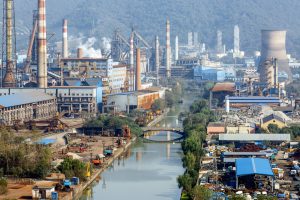

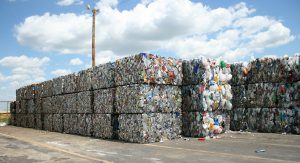
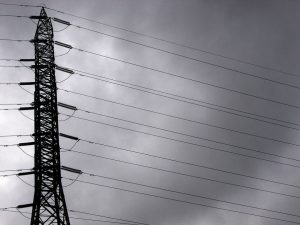


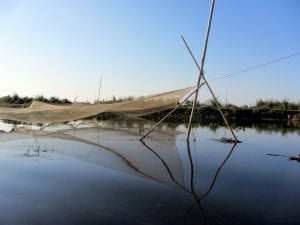
![An Indus river dolphin spotted in Dhunda [image courtesy: WWF-India]](https://dialogue.earth/content/uploads/2018/05/Indus-River-Dolphin-in-Dhunda_WWF-India-300x200.jpg)